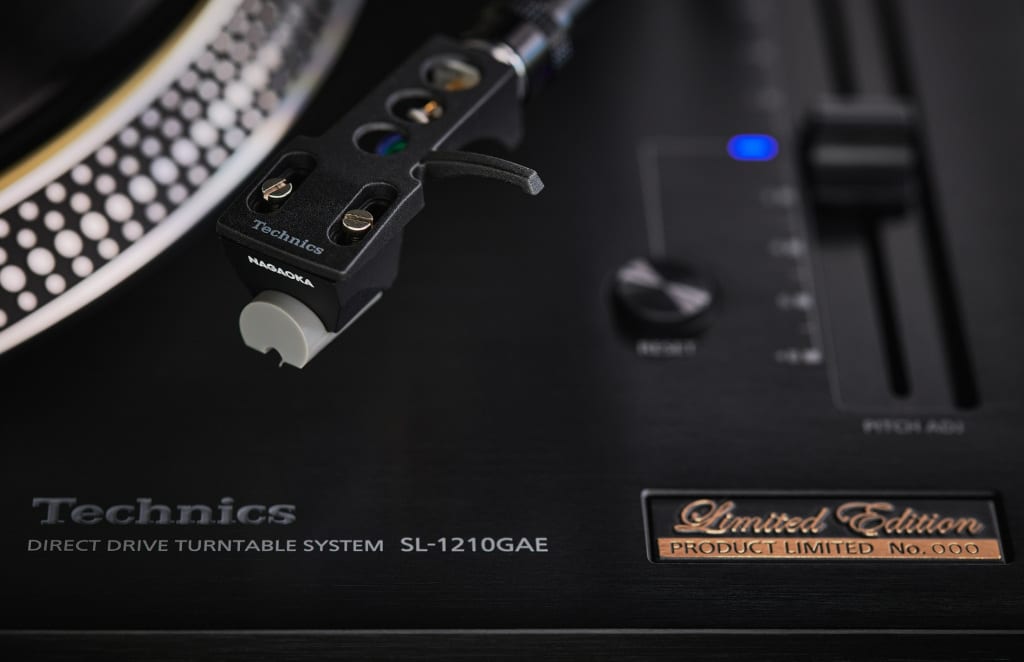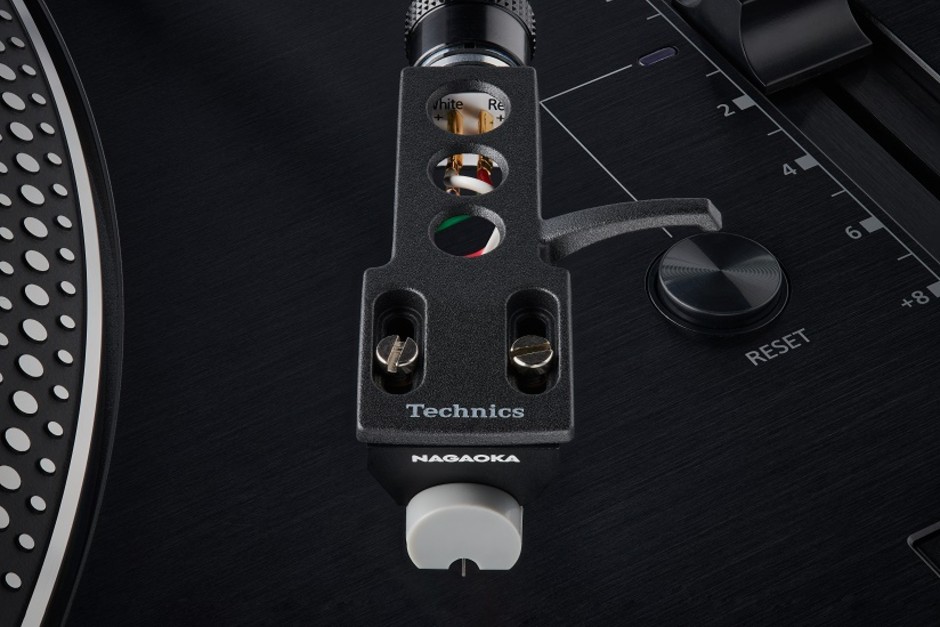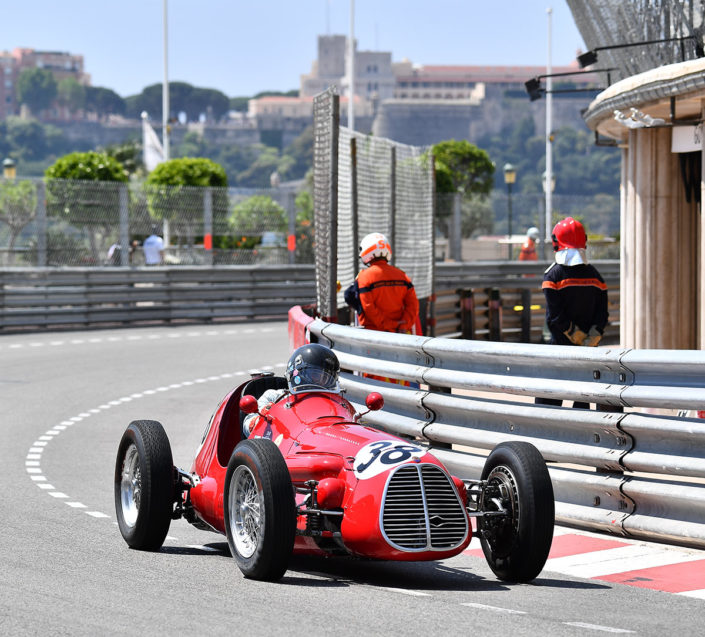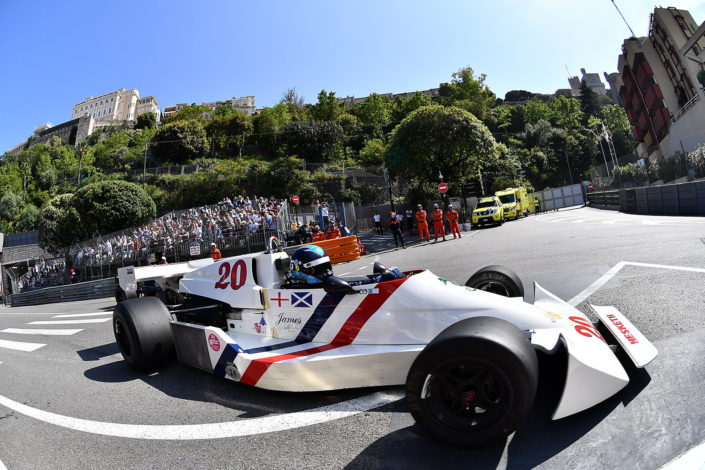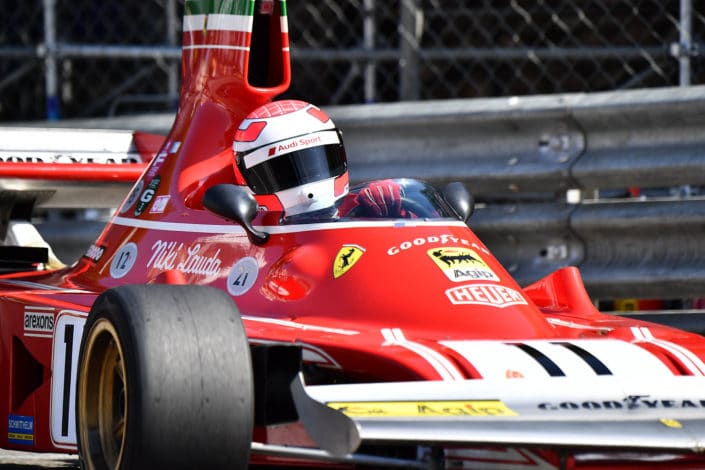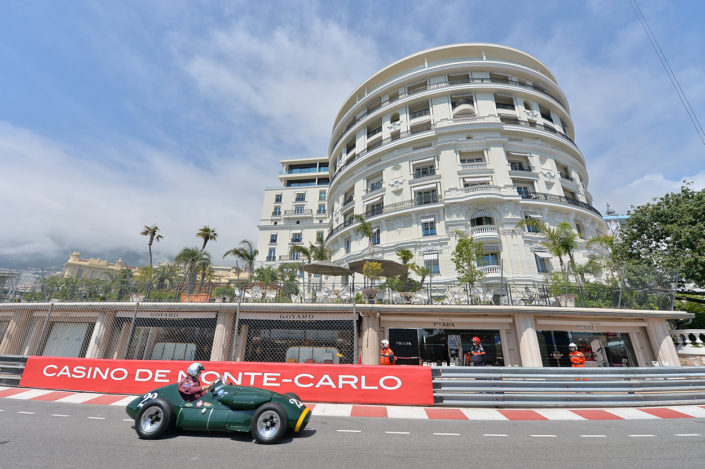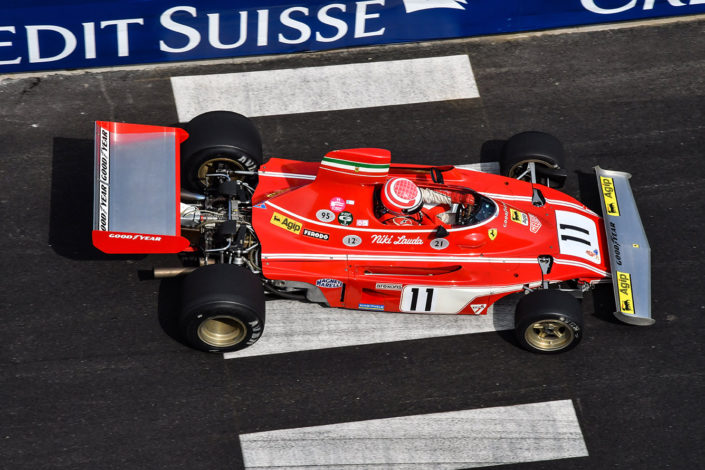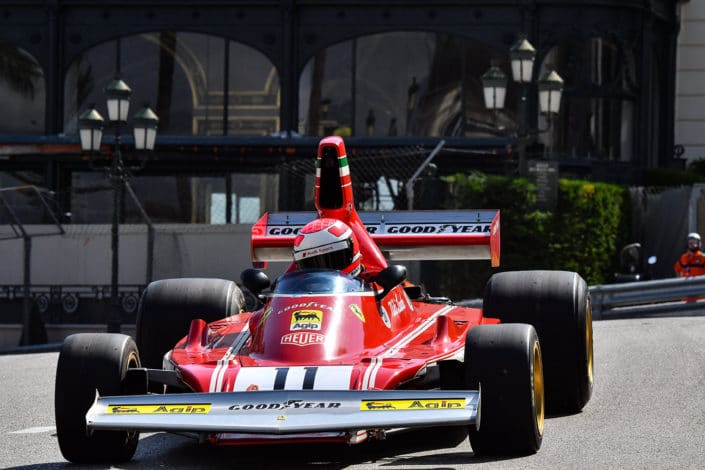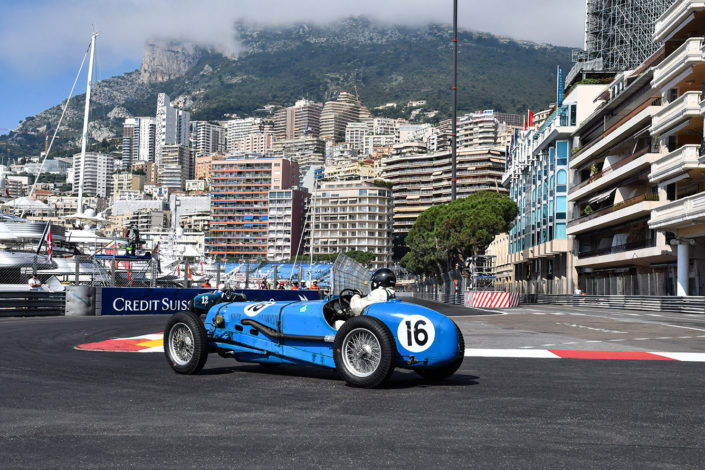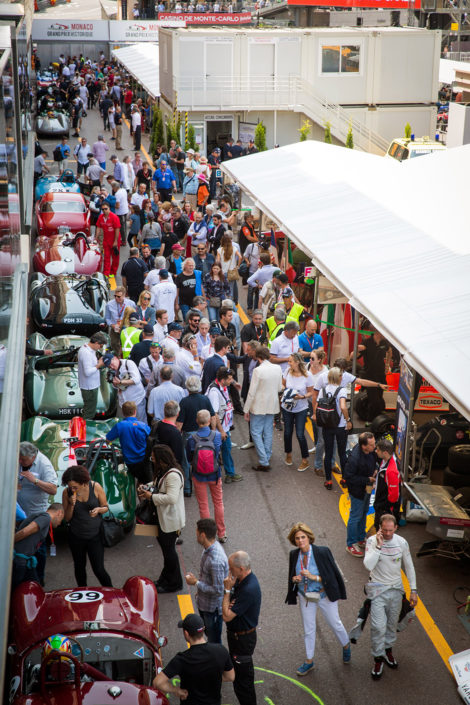Jaeger-LeCoultre unfolds infinity in four chapters with the Reverso Hybris Mechanica Calibre 185
La Grande Maison celebrates an icon, the Reverso, by releasing the most complicated timepiece ever presented in this emblematic collection. The Reverso Hybris Mechanica Calibre 185 is the result of over six years of development, combining key areas of savoir-faire at Jaeger-LeCoultre with innovative new astronomical indications.
It is the world’s first wristwatch with four functioning display faces. By incorporating three displays of lunar information on the interior face of the iconic Reverso cradle (the synodic cycle, the draconic cycle and the anomalistic cycle), the Hybris Mechanica Quadriptyque can predict the next global incidence of astronomical events such as supermoons and eclipses — the world’s first wristwatch to provide such a deep reading of the cosmos.
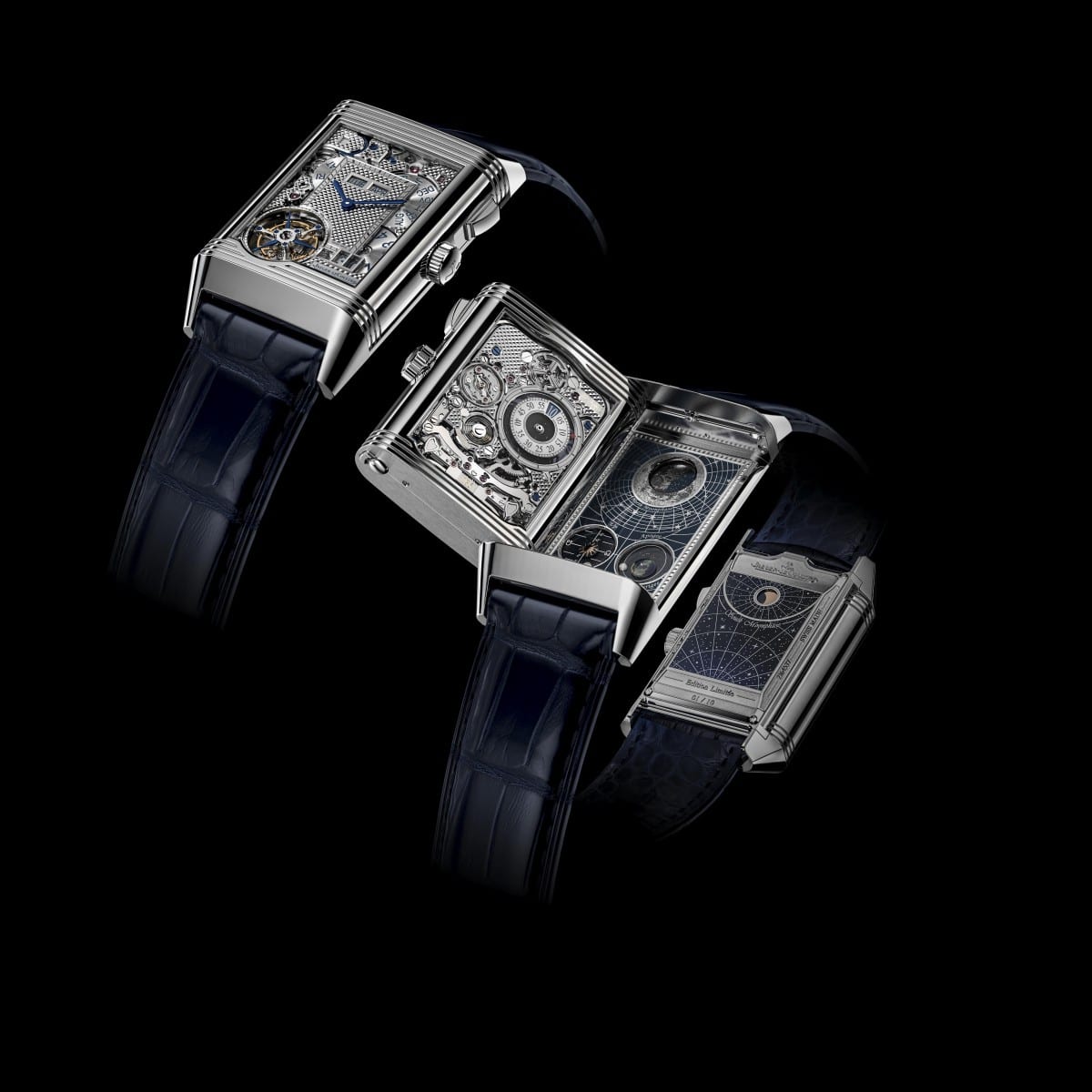
Key Points of the Jaeger-LeCoultre Reverso Hybris Mechanica Calibre 185 (Quadriptyque)
- The world’s first watch with four faces; the most complicated Reverso timepiece ever made
- A total of 11 complications, including perpetual calendar, minute repeater, indications of the synodic, draconic and anomalistic cycles (never before presented together in a wristwatch), requiring 12 patents
- Combines Jaeger-LeCoultre’s uncontested mastery of chiming watches, precision mechanisms, astronomical complications and ultra-compact watchmaking
- User-friendly design and construction; the most complicated Reverso is also one of the easiest to wear
Geneva, April 7th, 2021 — With 188 years of relentless innovation and savoir-faire behind it, Jaeger-LeCoultre continually sets new boundaries in the domain of fine mechanical watchmaking. Its Hybris Mechanica series of ground-breaking, ultra-complicated timepieces has established a constellation of stars shining with unparalleled brilliance in the horological heavens. In 2021, the latest addition to this celestial assemblage is a grand oeuvre six years in the making — the Jaeger-LeCoultre Reverso Hybris Mechanica Calibre 185 Quadriptyque, the first watch in the world with four faces of timekeeping indications.
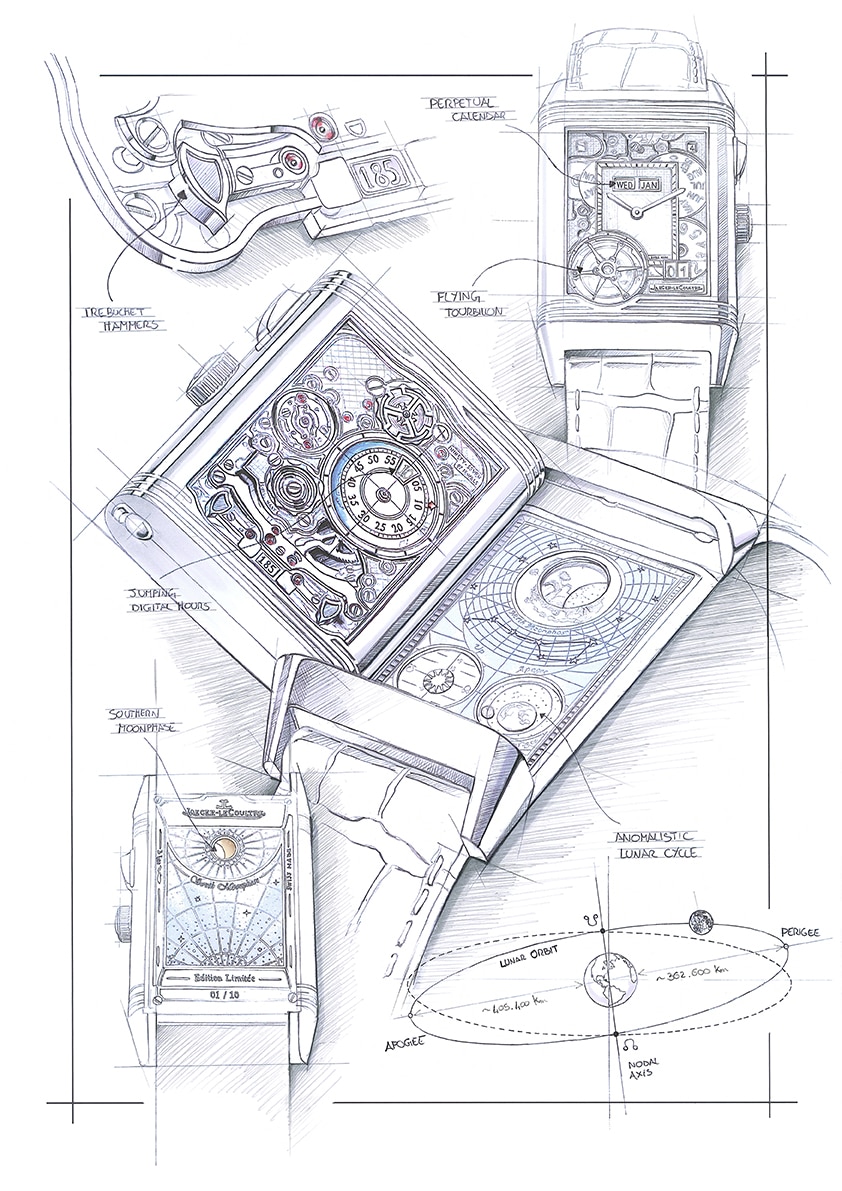
Since the advent of personal timepieces, the quest to build increasingly complicated watches is constrained by the volume of space available to the watchmaker. Having a multitude of complications in a watch is pointless unless they can be legibly and comprehensibly displayed, and the watch can be reasonably worn. Liberated by the unique design of the iconic Reverso, Jaeger-LeCoultre has created a world’s first: a double-faced case continuously driven by the in-house Calibre 185, and a double-faced cradle with indications synced and updated by the primary movement every day at the stroke of midnight by an ingenious mechanical system proprietary to Jaeger-LeCoultre.
If executed through conventional mechanical means, the 11 complications of the Jaeger-LeCoultre Reverso Hybris Mechanica Calibre 185 Quadriptyque would result in a timepiece far more suited for a desk than a wrist. Thanks to nearly two centuries of expertise and a thoroughly modern approach to innovation, Jaeger-LeCoultre tells the story of cosmic and terrestrial time within the confines of a 51mm by 31mm by 15mm case, a story told in four chapters of horological virtuosity.

Reverso Hybris Mechanica Calibre 185
CHAPTER ONE: SET THE UNIVERSE
The history of Jaeger-LeCoultre is rooted in the pursuit and attainment of precision. One of the earliest inventions of founder Antoine LeCoultre was the millionometer, the first instrument able to measure the micron. Today, Jaeger-LeCoultre is an undisputed pioneer and leader in creating exceptional executions of the tourbillon, a mechanism designed to enhance the chronometric performance of a timepiece. The Reverso Hybris Mechanica Gyrotourbillon 2 (2008) stunned audiences and won chronometry awards with its multi-axial revolving balance, and the Reverso Hybris Mechanica à Triptyque (2006) remains unique in its use of a tourbillon with a high-precision ellipse isometer escapement.
Naturally, the tourbillon is one of the main protagonists of the new Jaeger-LeCoultre Reverso Hybris Mechanica Calibre 185 (Quadriptyque). Occupying the 7 o’clock position on the recto face of the case, a flying tourbillon (thus called because the absence of an upper bridge allows it to appear as if it is floating) makes one rotation a minute, continuously varying the position of the balance in order to achieve a single corrected average time measurement.

Reverso Hybris Mechanica Calibre 185
The balance is the heart of any watch movement, and it is also the key to our measurement of time. As it beats in regular cadences of 4Hz (28,800vph), every eight beats mark the passing of one second. The seconds accumulate into minutes, into hours, days, weeks, months and years. The recto face of the Quadriptyque case, illustrating the uppermost abilities of mechanical horology, shows the indications of a perpetual calendar, a centuries-old mechanism that always displays the correct date despite the irregular number of days each month. It also takes leap years into account, displaying a 29th day in the month of February every four years. Highlighting the precision of the Jaeger-LeCoultre Calibre 185 construction, the perpetual calendar indications are instantaneous, changing at the stroke of midnight. In addition, the complexities of the Calibre 185 construction required the date to be displayed at the 5 o’clock position on the dial. At Jaeger-LeCoultre, only the perfect legibility of a grande date was considered acceptable for a watch of such prestige, which necessitated the creation of a new system of date display discs in order to accommodate the dimensions of the flying tourbillon at 7 o’clock. The opening chapter of the Jaeger-LeCoultre Reverso Hybris Mechanica Calibre 185 (Quadriptyque) is nothing less than a powerful statement of how la Grande Maison has comprehensively mastered the expression of civil time.

CHAPTER TWO: CHIME THE HEAVENS
There are extremely few watchmaking manufactures that possess in-house expertise in sonnerie wristwatches. There are even fewer that have been making them since 1870, accumulating one and a half centuries of experience and savoir-faire. There exists only one watchmaking manufacture that has over 200 chiming watch calibres in its historical and modern inventory — La Grande Maison du Sentier. The verso face of the Quadriptyque case is a virtuoso tour de force of Jaeger-LeCoultre’s patrimony as a master and innovator of chiming watches.

Reverso Hybris Mechanica Calibre 185
With the slide of a lever located just above the crown, the Quadriptyque unleashes its melody. First, a series of low notes, correlating to the number of hours. Second, an alternating couplet of high and low notes, corresponding to the quarter-hours. And concluding the melody, a succession of high notes, indicating the number of minutes to be added to the elapsed quarters. In concert, the hours-quarters-minutes chime plays the current time in musical code. The striking works of the Reverso Quadriptyque are completely exposed alongside a secondary time display, indicating the same time as the recto dial, but in a jumping-hours and peripheral-minutes format. As the Quadriptyque strikes the time, setting a symphony of springs, cams, hammers and gongs into motion, their acoustic report confirms the visual display of the secondary dial.
Visible through apertures on the movement plate hand-decorated with the guillochage motif known as clous de Paris are elements of the chiming mechanism uniquely associated with the sonnerie expertise of Jaeger-LeCoultre. These include the silent chime governor, patented by the manufacture in 1895 to eliminate the buzzing noise created by the older anchor system. More recent in-house innovations showcased in the Quadriptyque are the crystal gongs (first seen in the Master Minute Repeater Antoine LeCoultre of 2005) that attach the repeater gongs directly to the sapphire crystal to exploit the material’s optimal acoustic properties, the square cross-sectional profile of the gongs themselves that maximise contact and energy transmission between the hammers and gongs (a mainstay of Jaeger-LeCoultre’s repeating watches since 2006), and the articulated trebuchet hammers (developed for the 2009 Hybris Mechanica Duomètre à Grande Sonnerie) that deliver a clean and strong strike to the gongs. In totality, these innovations allow Jaeger-LeCoultre minute repeaters to produce some of the loudest and clearest chiming wristwatches today.

Debuting in the Reverso Hybris Mechanica Calibre 185 is a completely novel engineering of the chiming components to create a seamless chime with no pauses in between the hours, quarters and minutes. The conventional minute repeater mechanism utilises special pivoting racks that read the time off a series of cams and then proceed to activate each group of chimed notes in turn. This often results in silent gaps between the groups of chimed notes, especially when there are only hours and minutes to be struck, with no intervening quarters. The Hybris Mechanica Master Ultra Thin Minute Repeater Flying Tourbillon (2014) and Master Grande Tradition Gyrotourbillon Westminster Perpétuel (2019) made exceptional strides in chiming know-how by reducing these silent gaps, but the Reverso Quadriptyque has reached the ultimate stage of expertise in this area. By refining and inverting specific steps in this mechanical sequence, the Quadriptyque has succeeded in eliminating these gaps entirely.
The chime of the Jaeger-LeCoultre Reverso Hybris Mechanica Calibre 185 is an uninterrupted opus of acoustic excellence. It is the sound of innovation at its very apex.

Reverso Hybris Mechanica Calibre 185
CHAPTER THREE: UNCOVER THE ORBIT
Before the formal development of time reckoning systems, primitive societies observed celestial phenomena and created powerful myths and stories around the dance of the heavenly orbs above. The earliest astronomers were also mathematicians, and instruments constructed on their formulations were able to mechanically compute the positions of various celestial objects. The interaction between the various orbits of the Sun, Earth and Moon determine the rhythms of life, and watchmaking first evolved as a means to bring order to the world around us. As a watch manufacture with close to two centuries of fine watchmaking expertise, Jaeger-LeCoultre has mastered all aspects of time expression, from the quotidian to the esoteric. One of the hallmark complications of Jaeger-LeCoultre is the display of sidereal time, time that is determined with reference to the stars instead of the Sun, first presented in the Master Grande Tradition Grande Complication (2010).
This year, for the first time ever in the history of mechanical horology, Jaeger-LeCoultre unites three displays of lunar information — the synodic cycle, the draconic cycle and the anomalistic cycle — in a single wristwatch. This unique micromechanical combination of indications, located on the interior face of the cradle of the Reverso Hybris Mechanica Calibre 185, allows the determination of eclipse events (both solar and lunar) and rare lunar phenomena such as supermoons.
Occupying the top half of the interior face of the cradle of the Reverso Quadriptyque is a massive representation of the phases of the moon in the Northern Hemisphere. A laser-engraved moon is progressively covered and revealed by a mobile blue lacquer disc with gold glitter décor, corresponding to the age of the moon in the synodic cycle. While conventional displays of the moon phase accumulate one day of error after 32.5 months, the moon phase display of the Quadriptyque requires only one adjustment after 1,111 years.
Just below the moon phase display, on the left, is a counter with a three-dimensional micro-sculpted pink-gold sun orbited by a tiny hemispherical moon. This counter shows the draconic cycle, showing when the path of the Moon intersects with the orbit of the Earth around the Sun (known as the ecliptic). Such an intersection takes place twice in each cycle, indicated by the horizontal alignment on the counter of the moon and the sun. At this time, the Moon, Earth and Sun are all on the same plane; however, they may not be aligned. For them to be aligned, a phenomenon known as syzygy, an additional condition must be fulfilled — the Moon must be either in its new or full phase. When that happens, an eclipse event happens on Earth, either a lunar eclipse if the Moon is in its full phase, or a solar eclipse if the Moon is in its new phase. However, the actual visibility of the eclipse is dependent on various factors such as the geographical position of the viewer.
To the right of the draconic cycle counter is a domed representation of the Earth, micro-painted in enamel, with a hemispherical moon in eccentric orbit around it. This counter represents the anomalistic cycle, showing the varying distance between the Earth and Moon. At its apogee, the Moon is at its furthest distance from the Earth and is closest at its perigee. When the Moon is in its full phase near or at the perigee, an event known as a supermoon occurs, in which the Moon can appear to be up to 14 percent larger than usual in the sky.
The display of the synodic, draconic and anomalistic cycle together in a wristwatch is unprecedented in horology, with the latter two indications protected by patent, making the Reverso Hybris Mechanica Calibre 185 the only watch ever made to provide such depth of information about astronomical phenomena.
The Hybris Mechanica family of timepieces at Jaeger-LeCoultre began with the 2003 Atmos Mystérieuse and has since grown to encompass close to 20 groundbreaking horological creations, including the Master Hybris Mechanica Gyrotourbillon 1 (2004), the Reverso Hybris Mechanica Grande Complication à Triptyque (2006), the Master Ultra Thin Minute Repeater Flying Tourbillon (2014) and the Master Grande Tradition Gyrotourbillon Westminster Perpétuel (2019). The word Hybris originates from the Greek “hubris” that refers to the soaring ambition exhibited by the legendary heroes of antiquity. It is a promise made by Jaeger-LeCoultre to continually expand the horizons of watchmaking; a promise that has been dutifully kept for 18 years.

CHAPTER FOUR: REVERSE THE UNIVERSE
The Jaeger-LeCoultre Reverso was born in 1931, out of the need to protect delicate horological mechanisms amidst the balletic skirmish of hooves and mallets during games of polo. Today, 90 years later, a far older dance is reflected in the Reverso Hybris Mechanica Quadriptyque, one that guides our calendrical rhythms according to rules that are as precise and structured as those of the regal equestrian sport.
The original Reverso bore a single time-telling face, with a mobile case that could be turned over within its cradle, revealing a solid caseback. The next generation of the Reverso featured another dial on its caseback, either in a different design to accommodate the wearer’s aesthetic preference (Duetto) or displaying a second time zone (Duoface) to offer additional functionality when travelling. The Reverso Hybris Mechanica à Triptyque (2006) represented an evolutionary leap in horological innovation, with a third display positioned on the interior face of the Reverso cradle.
This year, the world’s first wristwatch with four faces premieres in the form of the Reverso Hybris Mechanica Calibre 185 (Quadriptyque), the ultimate expression of the Reverso concept. On the last face of the Quadriptyque, the exterior face of the cradle, a representation of the phases of the Moon in the Southern Hemisphere is shown. Most indications of the moon phase are of the Northern Hemisphere perspective, and the Quadriptyque’s display of the Southern Hemisphere moon phase on its fourth face is the fulfilment of the Reverso’s fundamental dualism. A star-flecked sky chart, engraved and lacquered in a gradient of blue shades forms the backdrop to the pink-gold moon, all of which are created in the Atelier des Métiers Rares® of Jaeger-LeCoultre.
The secret to the Reverso Hybris Mechanica Quadriptyque’s four functioning display faces lies in a solution first used in the 2006 Reverso Hybris Mechanca Grande Complication à Triptyque. Every day at midnight, a pin extends out of the main case movement to activate a mechanical corrector in the cradle, which then advances the cradle displays. The mechanism driving the cradle displays is set directly into the cradle itself, without any additional movement plates that would increase the thickness of the watch. Jaeger-LeCoultre’s expertise in ultra-compact watchmaking makes the Quadriptyque, despite its multiple indications and complications, one of the most wearable high-complication watches of our time.
PRESENTING INFINITY
The Jaeger-LeCoultre Reverso Hybris Mechanica Calibre 185 comes in an exceptional presentation box with a built-in mechanism that allows the wearer to quickly and intuitively set all the calendar and astronomical displays of the watch after a period of being unworn.
A two-position crown on the side of the box is used to first set the number of days that have elapsed since the watch was last worn. With the Quadriptyque set within the correction support frame, the box corrector crown can then be extended to its second position and wound to rapidly bring the watch to the current date for all calendar and astronomical indications. There is no risk of overcorrecting the watch or damaging the movement, since the entire process is controlled by the box corrector mechanism.
The latest timepiece in the Hybris Mechanica series took six years of research and development. It was made possible only through the 188 years of innovation and expertise accrued within the workshops of La Grande Maison. With the Reverso Hybris Mechanica Calibre 185 Quadriptyque, Jaeger-LeCoultre reasserts its position at the apogee of mechanical watchmaking and reaffirms its dedication to expanding the boundaries of horological knowledge.
TECHNICAL SPECIFICATIONS
REVERSO HYBRIS MECHANICA CALIBRE 185
Case material: White gold
Case dimensions: 51.2 x 31 mm
Thickness: 15.15 mm
Movement: Manually wound Jaeger-LeCoultre Calibre 185
Functions:
Face 1: Hour – Minute, Tourbillon (indicating the Second), Instantaneous Perpetual Calendar, Grande Date, Day, Month, Leap Year, Night & Day
Face 2: Jumping Digital Hour, Minute, Minute Repeater (with system avoiding dead time)
Face 3: Northern Hemisphere Moon Phase, Draconic Lunar Cycle (height of the moon), Anomalistic Lunar Cycle (apogee and perigee), Month, Year
Face 4: Southern Hemisphere Moon Phase
Power reserve: 50 hours
Water resistance: 30 metres
Strap: Blue alligator
Reference: Q7103420
Limited edition of 10 pieces







